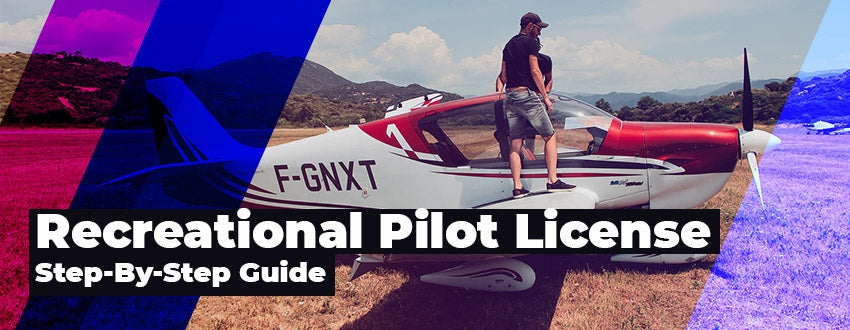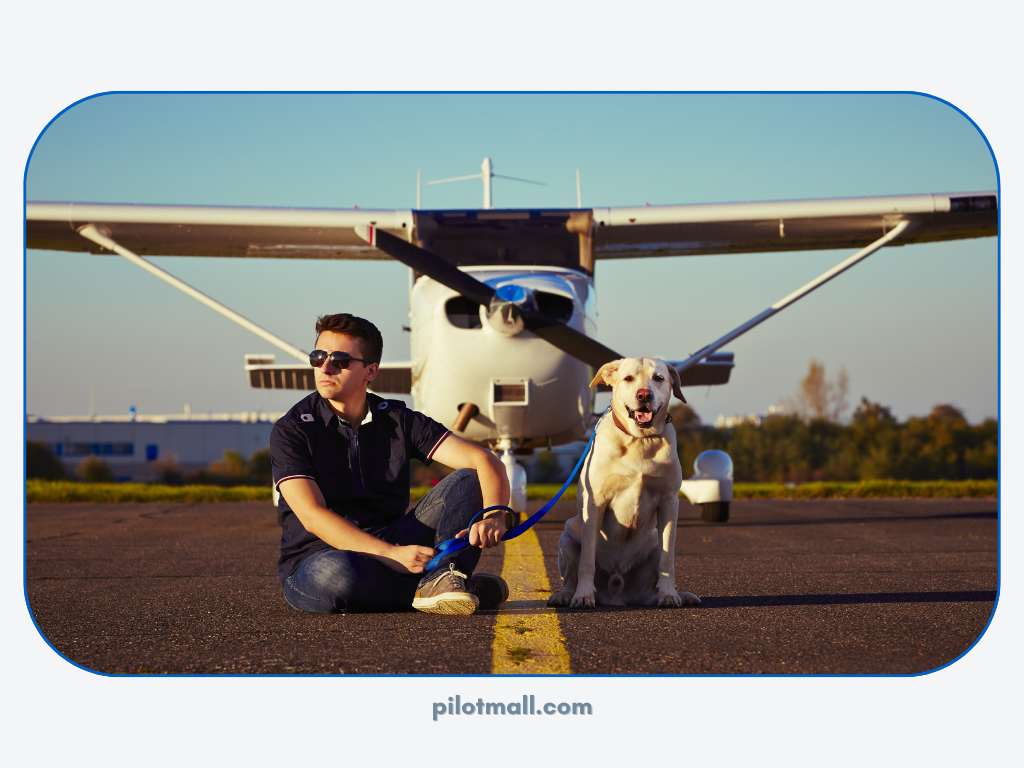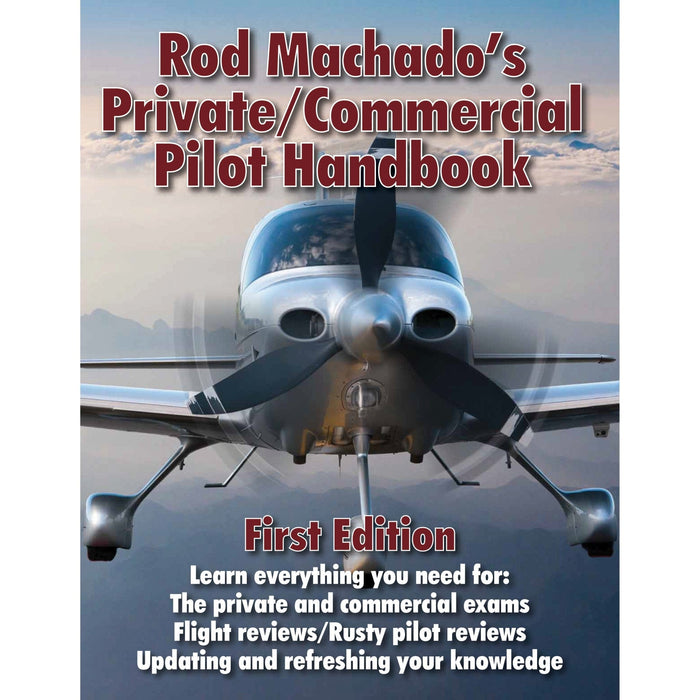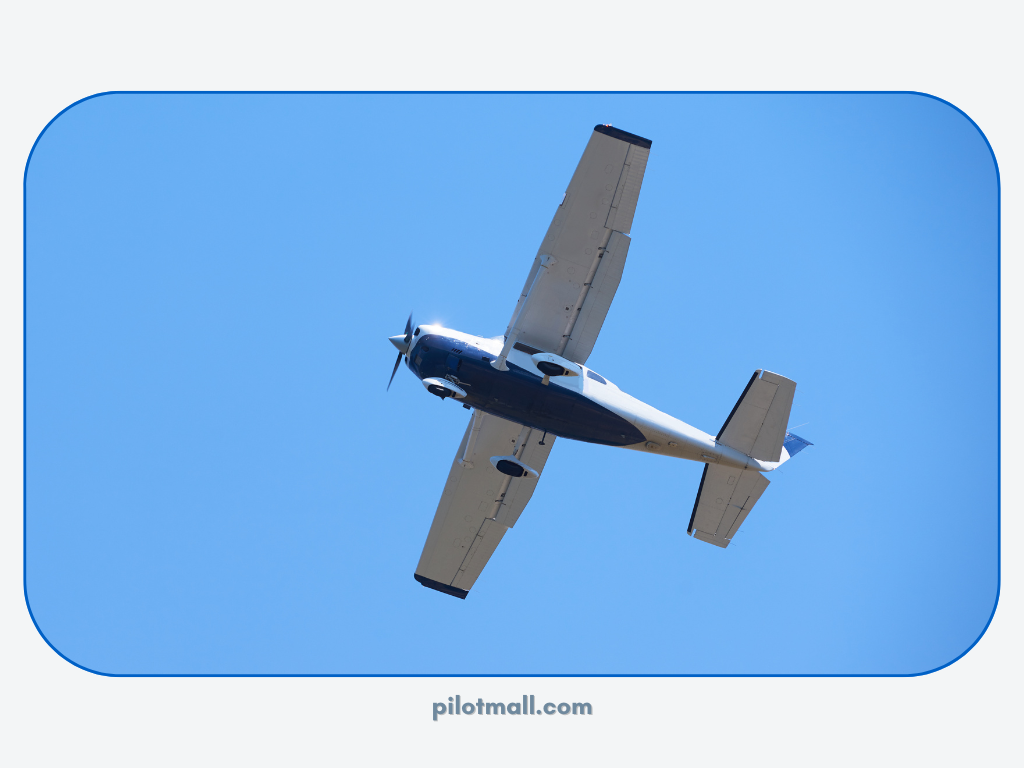Obtain Your Recreational Pilot License (Step-By-Step Guide)
So, you want to learn how to fly an airplane? Wonderful! As you dip your toes into the world of aviation and decide to earn a pilot’s license, you may wonder which type of license – or certificate as it is generally referred to – is right for you. One of the entry-level choices that may be a good fit is a recreational pilot license.

Featured Pilot Gear
Browse our selection of high-quality pilot supplies! Your purchase directly supports our small business and helps us continue sharing valuable aviation content.
So, you want to learn how to fly an airplane? Wonderful! As you dip your toes into the world of aviation and decide to earn a pilot’s license, you may wonder which type of license – or certificate as it is generally referred to – is right for you. One of the entry-level choices that may be a good fit is a recreational pilot license.
What is a recreational pilot license?
A recreational pilot license is a type of certificate that is designed for those who want to fly small aircraft mainly for fun and near their local area. This certificate authorizes pilots to fly provided they, their aircraft, and their flight plans meets certain parameters.

Recreational Pilot Certificate Requirements
- Aircraft must be single engine up to a maximum of 180 hp
- Aircraft must have no more than 4 seats
- Maximum flight altitude is 10,000 ft (unless flying over terrain that is higher than 10,000 ft)
- Maximum flight range is within 50 nm of your home airport
- All flights must be conducted during daylight hours and in good weather
- Flights must not be in airspace which requires ATC contact
- Pilot may carry a maximum of 1 passenger
- Pilot must hold a 3rd class medical certificate
- Pilot must be at least 17 years old
- Pilot must be proficient in reading, writing and understanding the English language
- Pilot must pass a written knowledge test and a practical flight test
- To be able to carry a passenger, pilots with fewer than 400 hours logged flight time must complete 3 takeoffs and landings every 90 days to maintain currency
- Pilots who go more than 180 days without logging time must take an instructor with them on their next flight to establish currency

Pro Tip: It’s not part of the standard recreational pilot license, but you may be interested to know that your instructor can endorse your logbook giving your permission to fly after dark (although not with passengers), beyond the 50nm limit or in airspace where you need to contact ATC. This expands the boundaries of your license considerably without having to move up to the private pilot license.
What is the difference between a recreational and private pilot license?
A recreational pilot license is a restricted version of a full private pilot license. Although you have more limitations, the advantage is that it takes less time and money to earn a recreational pilot license than it does a private pilot license.
If the types of flights you are interested in doing all fall within the parameters of a recreational pilot license, then choosing that route as opposed to a private pilot license will get you up in the air faster and usually at a lower cost.
How much does a recreational pilot license cost?
How much you end up paying to get your recreational pilot license will vary based on where you train and who you train under. You will be paying for flight time, books/study materials, and examination fees. You may also wish to purchase renter’s insurance.
Expect to pay an average of $6,000 - $7,000 to earn your recreational pilot license.
Wondering how you can afford flight training costs? Check out this article.
How do I get a recreational pilot license?
1. Be sure you meet the requirements
You can start training at age 15, but remember that you must be at least 17 to take your practical exam and earn your certificate. Since you’re reading this article, we’re going to assume you meet the criteria of having the ability to read, speak, write and understand the English language. Finally, look over the eligibility requirements for a 3rd class medical certificate and note any potential red flags that you may need to discuss with the medical examiner.
2. Apply for a student pilot certificate
Before you will be allowed to fly, you must have a student pilot certificate issued by the FAA. Complete your application digitally on the Integrated Airman Certification and Rating (IACRA) website or by printing and filling out FAA form 8710-1.
Turn the printed form or proof of digital filing in to an authorized location/party. Options include a Flight Standards District Office (FSDO), an FAA-designated pilot examiner (DPE), a certified flight instructor (CFI) or an airman certification representative who is affiliated with a part 141 flight school.
The authorized individual or office will process your application and send it to the Airmen Certification Branch for review. Expect to receive your printed certificate by mail within 3 weeks.

Pro tip: The FAA says that applying online speeds up the process.
3. Get your 3rd class medical certificate
Your student pilot certificate and your 3rd class medical certificate plus your government issued photo ID are the 3 documents you will always be carrying with you in the cockpit.
To get your medical certificate, start by logging into MedXPress and starting the application. Next locate an Aviation Medical Examiner (AME) and schedule an appointment. At your appointment, the AME will do an exam to ensure you qualify. Assuming you do, he or she will issue you a medical certificate.

Pro tip: When it is time to renew your medical certificate, you can get another 3rd class medical or switch to the BasicMed certification option.
4. Find a school/instructor
Now that the paperwork is out of the way, you can find a pilot school or certified flight instructor (CFI) to do your training.
5. Take and pass your FAA written exam
Hit the books right away and study for your written test. You will need to score a 70% or better on the 50-question test to pass. Some CFIs will let you start flying before you pass your written exam, but others want you to prove your grasp of the theoretical concepts before they take you up in an aircraft. Either way, it’s best to get this out of the way first.
6. Flight training
This is the part you’ve been looking forward to. It’s finally time to get up in the air and log those hours. A recreational pilot student must log a minimum of 30 hours flight time in order to be eligible to take their check ride. Of these hours at least 15 must be instructional flights and at least 3 must be solo flights. A minimum of 2 hours must be spent on a training flight to an airport at least 25 nautical miles from your home airport.

Pro tip: The minimum requirement may be 30 hours, but the average is 44, so don’t feel rushed or stressed if you aren’t ready at 30 hours. Your CFI will sign off when they feel you’ve mastered the skills.
7. Check ride
The last hoop to jump fly through is taking and passing your check ride. After your CFI signs off on your proficiency, you will meet with an FAA examiner to take your verbal and flight exams. The designated pilot examiner (DPE) will check your knowledge and skills to make sure you are ready to be a safe solo pilot. Once they sign you off, they will help you file the paperwork with the FAA and congratulations – you are officially a licensed recreational pilot.

Frequently Asked Questions
- How do I obtain a recreational pilot certificate?
- Can my recreational flight hours count towards a private pilot certificate?
- Can a recreational pilot certificate be a steeping stone towards a career path?
Becoming a flight instructor is also a possibility for those holding a recreational pilot certificate. As you gain more experience and build your flight hours, you can pursue additional training to become a certified flight instructor, sharing your passion for flying with others and helping them earn their own pilot certificates.
Take Away
Once you've earned your recreational pilot certificate, you can further enhance your flying skills and knowledge by obtaining additional logbook endorsements from a certified flight instructor.
These endorsements will allow you to fly different types of aircraft or engage in specific activities, expanding your horizons as a recreational pilot.
The recreational pilot certificate is an excellent starting point for aspiring aviators. It offers a taste of the aviation world while allowing flexibility for leisure flying.
As you gain experience and logbook endorsements, you can continue to grow as a pilot and even consider becoming a flight instructor to guide others on their journey to obtaining pilot certificates.
So take flight and begin your adventure in the skies!
Ready to take the plunge? Check out our fine selection of Flight Training Material for the Recreational or Private Pilot Here.
We highly suggest reading Rod Machado's Private Pilot/Commercial Handbook .

|
Rod Machado's Private Pilot/Commercial HandbookLearn to fly from a book that has personality with Rod Machado’s "Private Pilot/Commercial Pilot Handbook." In addition to having everything you need to know to become a knowledgeable and competent pilot, this book is full of wit, humor, analogies, and fun. |
Interested in another Step-by-Step guide?
Try our guide to become a Sport Pilot!












1 comment
I’m wondering what the grand total cost would be, consisting of books, class hours, flight cost etc.